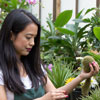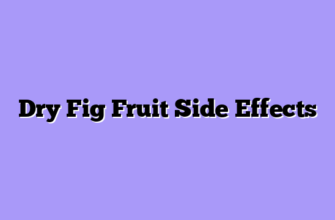Let me tell you about one of the most underrated treasures in my orchard – a fig variety that makes my customers stop mid-bite and ask, “What is this?” I’m talking about the Negronne fig, known scientifically as Ficus carica ‘Negronne’, though you might hear old-timers call it Violette de Bordeaux or simply the Bordeaux fig. Here in Southern California, we’re blessed with a climate that lets us grow these Mediterranean beauties, and I’ve become somewhat obsessed with this particular cultivar.
Why the Negronne Deserves a Spot in Every California Garden
When I first planted my Negronne trees about a decade ago, I’ll admit I was skeptical. Another fig variety? Really? But this French heirloom proved me wrong within the first harvest. The Negronne, which originated in the Bordeaux region of France (hence one of its common names), produces small to medium-sized fruits with deep purple-black skin that’s so dark it almost looks like it’s been dipped in midnight. The flesh inside? Pure ruby-red magic.

The beauty of growing Negronne figs in our region is that San Diego’s Mediterranean-style climate mirrors the warm, dry summers and mild winters of southern France. We get just enough chill hours (those crucial cold periods below 45°F that many fruit trees need) without the harsh freezes that would damage these trees. My Negronne specimens have adapted beautifully, producing two crops annually – a light breba crop on old wood in early summer and a heavy main crop on new growth from August through October.
Growing Negronne Figs: What I’ve Learned in the Field
Here’s something most people don’t realize: figs are incredibly forgiving trees. They’re like that easygoing friend who adapts to almost any situation. My Negronne trees have survived both drought conditions (though they definitely prefer regular water) and the occasional unexpected cold snap we get here in Southern California. But to get them producing those restaurant-quality fruits that fetch premium prices at farmer’s markets, you need to understand their preferences.
Key Growing Requirements for Negronne Figs:
- Full sun exposure (minimum 6-8 hours daily)
- Well-draining soil with pH between 6.0-6.5
- Deep watering every 7-10 days during growing season
- Minimal fertilization – too much nitrogen produces leaves instead of fruit
- Annual pruning in late winter to maintain shape and encourage fruiting wood
- Mulch layer to retain moisture and regulate soil temperature
The Negronne is classified as a common-type fig, meaning it doesn’t require pollination by the fig wasp (Blastophaga psenes) to produce fruit. This makes it perfect for home gardeners and commercial growers alike. You don’t need to worry about maintaining caprifigs or dealing with the complex pollination process that some fig varieties require.
One challenge I’ve encountered specific to the Violette de Bordeaux is its susceptibility to fruit splitting during periods of irregular watering. When we get those random September rains after weeks of drought, the sudden moisture influx can cause the ripe fruits to crack open. I’ve learned to manage this by maintaining consistent irrigation throughout the growing season rather than relying on natural rainfall.
The Market Potential Nobody’s Talking About
Let me share some numbers that got me excited about expanding my Negronne plantings. According to recent agricultural data, specialty fig varieties can command prices 3-4 times higher than common varieties at farmer’s markets and to restaurant clients. While standard fresh figs might sell for $8-12 per pound, I regularly get $18-25 per pound for my Negronne harvest, especially from high-end restaurants in La Jolla and downtown San Diego.
| Market Comparison | Standard Fig Varieties | Negronne/Specialty Figs |
|---|---|---|
| Wholesale Price (per lb) | $3-5 | $8-12 |
| Farmer’s Market Price | $8-12 | $18-25 |
| Restaurant/Chef Direct | $10-15 | $20-30 |
| Dried Fruit Premium | Standard | 50-75% higher |
The reason for this price premium? Scarcity and quality. Most commercial fig production in California focuses on Calimyrna, Black Mission, and Brown Turkey varieties for dried fruit production. The Negronne’s delicate skin and high sugar content make it less suitable for industrial drying but perfect for fresh consumption. Chefs love the visual appeal – that deep purple exterior contrasting with the jewel-toned interior creates stunning presentations on dessert plates.
I’ve built relationships with about a dozen upscale restaurants and three specialty grocers who specifically request my Negronne harvest. One chef told me she features them in a grilled fig and prosciutto appetizer that’s become her signature dish. Another uses them in a honey-roasted fig ice cream that sells out every weekend. This consistent demand has made the Negronne one of my most profitable crops per square foot.
Cultivation Timeline: From Planting to Harvest
For anyone considering adding this variety to their orchard or backyard, here’s what you can realistically expect:
Year-by-Year Development Guide:
- Year 1 – Plant bare-root or containerized trees in late winter; expect minimal fruiting as the tree establishes its root system and framework
- Year 2 – Light production begins, typically 5-15 fruits per tree; focus on training the tree’s shape through selective pruning
- Year 3 – Production increases significantly to 30-50 fruits; the tree’s canopy fills out and develops more fruiting wood
- Year 4+ – Full production kicks in with 50-100+ fruits per season depending on tree size and management; harvest becomes commercially viable
The Bordeaux fig is considered a slow-to-moderate grower compared to more vigorous varieties like Brown Turkey. My trees typically reach 10-15 feet in height with a similar spread, though I keep them pruned to around 8 feet for easier harvesting. This more compact growth habit actually works in their favor – you can plant them closer together (12-15 feet apart) than some other cultivars, maximizing yield per acre.
From Tree to Table: Making the Most of Your Harvest
Here’s where the Negronne really shines – versatility. While they’re absolutely incredible eaten fresh off the tree (seriously, try it when they’re still warm from the sun), these figs have multiple income streams. I’ve experimented with various value-added products, and here’s what works:
The fresh market remains my primary focus during peak season. Those ruby-centered beauties sell themselves at the farmer’s market stand. But inevitably, there are days when production exceeds what I can sell fresh. That’s when I turn to preservation methods. Unlike some varieties that turn mushy when dried, Negronne figs dehydrate beautifully, concentrating their already intense sweetness into chewy, candy-like morsels.
I also make fig jam, fig balsamic reduction, and even fig leather. A local bakery buys my dried Negronne figs specifically for their artisan bread – apparently, the flavor profile pairs exceptionally well with walnuts and rosemary. Who knew? Another customer makes fig liqueur using my harvest, and she claims the Violette de Bordeaux produces a superior product compared to other varieties she’s tested.
| Processing Method | Shelf Life | Market Price Increase | Best Season |
|---|---|---|---|
| Fresh (whole fruit) | 3-5 days | Baseline | July-October |
| Dried/Dehydrated | 12+ months | 200-300% | Year-round |
| Preserves/Jam | 12-18 months | 150-250% | Year-round |
| Frozen (whole) | 6-8 months | 50-100% | Year-round |
Common Challenges and Real Solutions
I’d be lying if I said growing Negronne figs was all sunshine and sweetness. Every crop has its challenges, and this one’s no exception. The biggest issue I face? Birds. Mockingbirds, scrub jays, and even crows have developed a taste for these figs, and they seem to know exactly when each fruit reaches peak ripeness – usually about six hours before I planned to harvest.

Another issue specific to this variety is its sensitivity to root disturbance. When I tried relocating a three-year-old tree, it sulked for an entire season before recovering. The lesson? Choose your planting location carefully because Negronne figs prefer to stay put once established.
Pest pressure has been surprisingly minimal. The occasional fig beetle shows up, but nothing compared to the issues I’ve had with stone fruits. The thick, dark skin of the Negronne seems to offer some natural protection. I practice organic methods exclusively, relying on beneficial insects and good cultural practices rather than chemical interventions.
Is the Negronne Right for Your Growing Operation?
Think of the Negronne fig as the specialty coffee of the fruit world. It’s not for everyone – if you’re looking for massive production volumes and industrial-scale operations, stick with Black Mission. But if you’re interested in quality over quantity, if you have access to discerning customers willing to pay for exceptional flavor, and if you enjoy growing something that sparks conversation, the Violette de Bordeaux deserves serious consideration.
The initial investment is modest – bare-root trees typically cost $25-50, though I recommend spending a bit more for larger, established plants if you want fruit sooner. Your biggest investment will be time and patience during those first few years while trees establish themselves. But once they hit their stride, the returns can be remarkable.
In my operation, the Negronne trees occupy about 15% of my total acreage but generate nearly 30% of my fruit revenue. That’s the kind of math that makes a farmer smile. They’ve become my signature crop, the variety that customers ask about by name and plan their farmer’s market visits around.
If you’re in California, southern Arizona, parts of Texas, or anywhere else with a Mediterranean climate, I’d encourage you to give this French heirloom a try. Start with one or two trees, learn their personality, and see if they fit your operation. You might just discover, like I did, that sometimes the best treasures are the ones hiding in plain sight, waiting for someone to recognize their potential.








